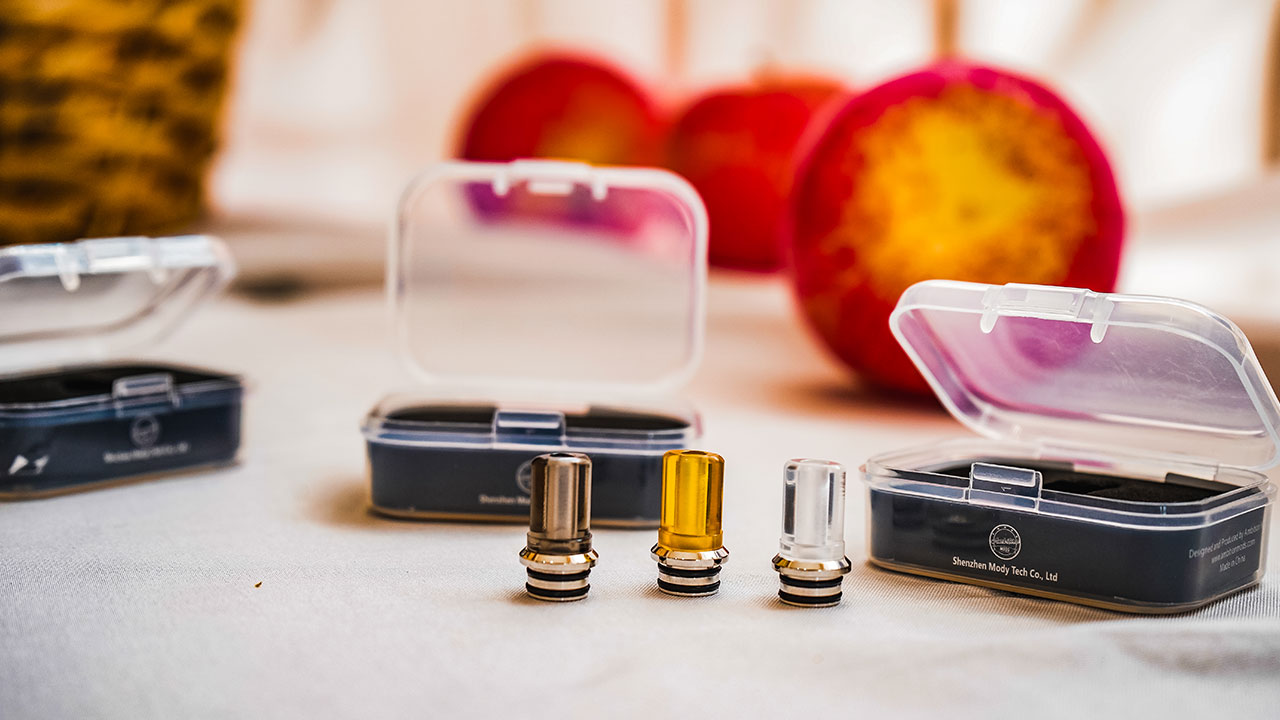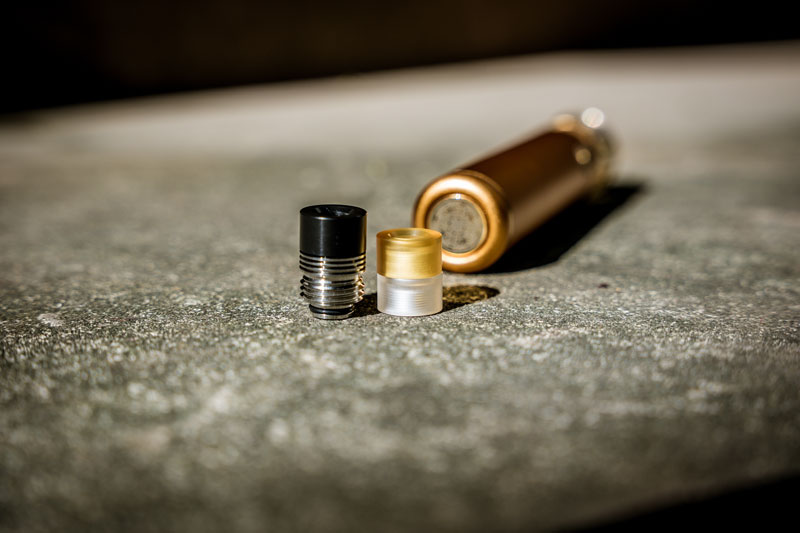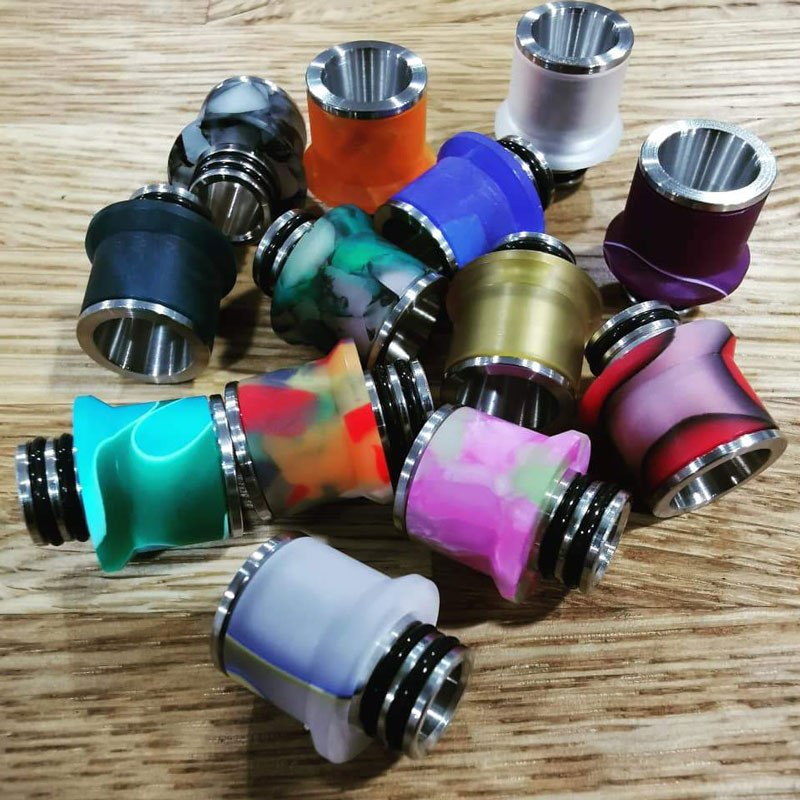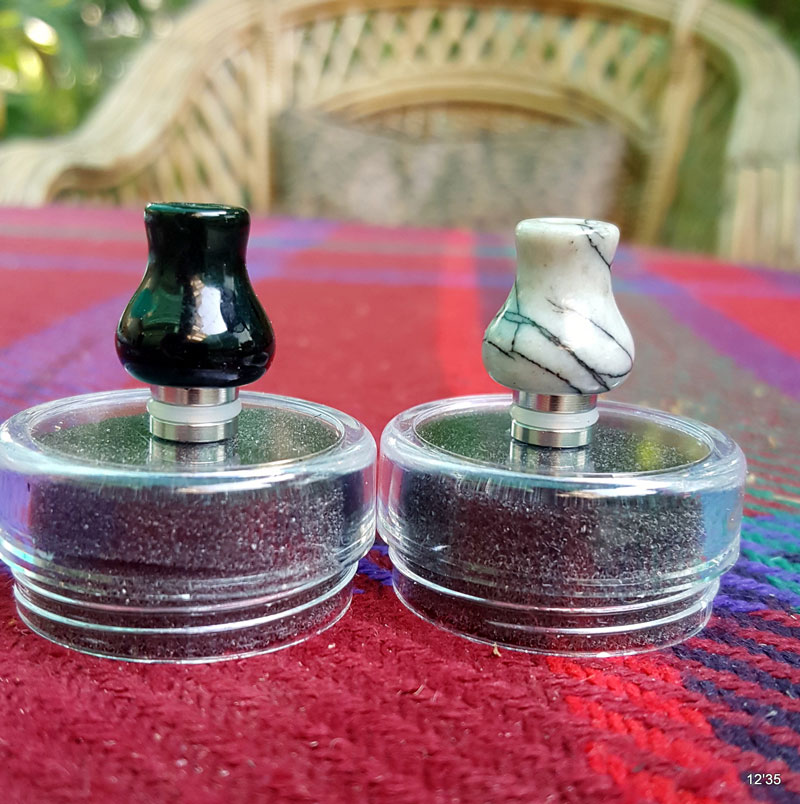
What is driptip?
A drip tip is a vape accessory that attaches to your atomizer. Whether you’re using an RDA, RTA, or sub-ohm tank, the only thing standing between you and your vape is the drip tip. You simply drip your e-liquid through the hole in the drip tip and you’re ready to vape. Drip tips come in all shapes, sizes, materials, and styles. While they may seem small and insignificant, drip tips can have a huge impact on the quality of your vape.
A brief history of the drip tip
Drip tips were originally used with regular atomizers (non-rebuildable). In the early days of vaping, vapers who wanted to get a high flavor often used 510 or 808 atomizers. They looked like cartomizers, but they couldn’t be refilled. Since atomizers were usually made of metal, vapers used drip tips to avoid burning their lips and to get a better taste.
Many people thank Super T for inventing the drip tip. Before drip tips, atomizers had a simple mouthpiece. You had to remove it to add more e-liquid to the atomizer. Vapers found it much more convenient to be able to drip e-liquid into the atomizer through a small hole without removing the accessory.
The first drip tips were made of pretty standard plastic, and they were often disposable. It was only as more people started to discover the ins and outs of vaping that drip tips began to be made of better materials and designs. Not only was Super T the inventor of the drip tip, but they were also the first to use premium materials to make their drip tips. Super T, which is now closed, was known for their carefully crafted drip tips made of high-quality metal. Today, drip tips are made of a variety of materials, from regular plastic to high-quality plastic, metal, glass, and more.
What is a 510 driptip?
One of the most common terms for atomizers is the “510 drip tip”. As mentioned above, in the early days of vaping, vapers used either a 510 or an 808. These numbers refer to the connection pins on the bottom of the atomizer, each with a different thread pattern. The two sizes also have different diameters, so one drip tip cannot fit the other. Later, the 510 connection became the standard for most vaping devices, and with it, the concept of the 510 drip tip became the standard.
For vapers, buying a 510 drip tip means making sure it fits any atomizer of the same size. Atomizers usually have a standard 510 drip tip hole, or some have an additional adapter that you can use.
Driptip materials
Drip tips made of different materials have different characteristics. There is no one best material. It is all about user preference. Below are the most common drip tips made of different materials and their characteristics.
Plastic

Plastic drip tip
For those who tend to lose small accessories, inexpensive plastic drip tips are the best option. They are easy to buy and replace. However, there are also some made from premium plastics to cater to vapers using sub-ohm builds. Drip tips made from these materials are usually more expensive, but they also insulate better. Using this premium plastic allows vapers to enjoy hot or warm vapes without causing discomfort to their lips. Here are some of the premium plastics used in vapes.
Delrin: This is the most common name for the thermoplastic polyoxymethylene (POM). It has high heat resistance and comes in a variety of colors.
Teflon: This is the common name for the thermoplastic polytetrafluoroethylene (PTFE). Many people are familiar with Teflon because it is used for non-stick cookware. It also has good heat resistance.
Ultem: short for thermoplastic polyetherimide (PEI). Ultem drip tips have been making waves in the last year. They are highly heat-resistant and flame-resistant. Most Ultem products are opaque yellow, but some manufacturers also sell black Ultem products.
Metal

Metal drip tips are quite popular.
Metal drip tips are also popular after plastic drip tips. Stainless steel or aluminum drip tips are cheap and very durable. Vapers who want something more luxurious can buy gold or titanium drip tips. While metal drip tips look great, they are also very conductive. This can be a problem for vapers or sub-ohm users as the drip tip can get very hot with continuous use. Depending on the quality and workmanship of the drip tip, some vapers have even reported that metal drip tips can sometimes affect the taste of their e-liquid.
Glass

Glass drip tips come in a variety of shapes
The ultimate choice for flavor-conscious vapers, glass drip tips can be shaped into a variety of beautiful shapes. They are heat-resistant and do not affect the flavor of your e-liquid. Some flavor-conscious vapers even compare vaping with glass drip tips to drinking a glass of wine. They argue that fine wine should not be drunk from a metal or plastic cup, so premium e-liquids should not be used with plastic or metal drip tips. The downside to glass drip tips is that they are expensive and break easily.
Stone

Driptip stone with special appearance
There are many artistic drip tips made of synthetic stone or resin stone. They have a unique look that makes your vape stand out. They also have stable heat resistance. Stone drip tips are usually more expensive than metal and plastic drip tips, but most users think that the unique look is worth the price.
Wood
Wooden drip tips look great and are highly heat-resistant, but they require special care during processing. Poor processing can expose the wood to heat and moisture. As we all know, you can’t vape without heat or moisture. Damaged wooden drip tips will warp and lose their shape. If not stored properly, they will crack. Getting wood chips stuck in your lips… not a good thing.
Hybrids
In addition to the materials listed above, some drip tips are also made with a combination of both materials to get the characteristics of both. For example, it is common to see a plastic drip tip with a metal casing. This allows the drip tip to have the high heat resistance of plastic and the durability of metal. Just as there is no best drip tip material, there is no best combination. It all comes down to user preference.





![[H] dotMod dotAIO X Pro](http://thevape.club/cdn/shop/files/h__dotmod_dotaio_x_pro_1faf8f9936ab41d0acec625b36f445b1.png?crop=center&height=20&v=1750127543&width=20)
![[H] dotMod dotAIO X Pro](http://thevape.club/cdn/shop/files/dotmod_dotaio_x_pro_black_19673d303b75438a9b5e0dddb261b88a.png?crop=center&height=20&v=1750127543&width=20)




